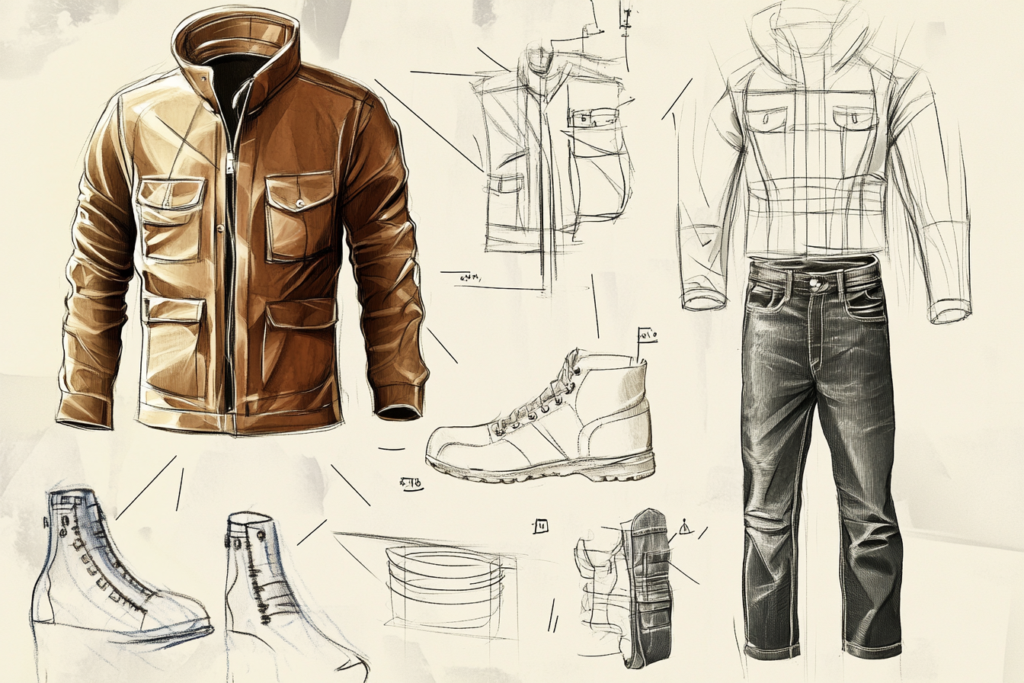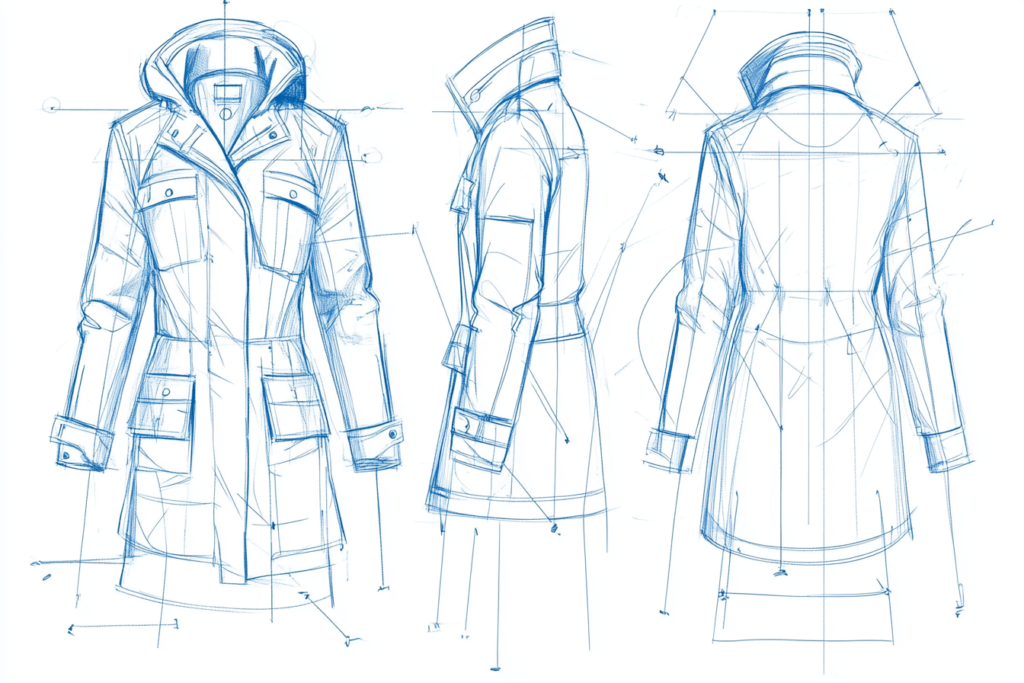Introduction: What is a Callout in Clothing Technical Drawings?
A callout is a term commonly used in clothing design and technical drawing to refer to an annotation or label that highlights specific details, features, or parts of a garment. These annotations are essential for providing clarity and precision in the design process, especially when communicating complex garment details to manufacturers, pattern makers, and production teams.
In the context of clothing technical drawings, a callout serves as a tool to point out specific elements like stitching, fabric type, trims, or any other features that need further explanation. It is an integral part of the garment specification process, ensuring that the design intent is accurately conveyed.
In this article, we’ll explore the role of callouts in technical garment drawings, their purpose, and best practices for using them effectively in fashion design.


The Role of Callouts in Clothing Technical Drawings
A clothing technical drawing is a detailed representation of a garment, often used in the fashion industry to communicate a design’s structure, fit, and functionality. The callout is a critical element of these drawings, providing annotations that draw attention to specific features and ensuring that no detail is overlooked during production.
Here’s a closer look at how callouts function in technical garment drawings:
- Highlighting Specific Design Details:
- Callouts are used to highlight parts of the design that require extra attention, such as button placements, zipper finishes, pleat formations, or embroidery. For example, a callout might indicate the type of stitching used on a hem or specify the fabric used for a collar.
- Clarifying Measurements and Dimensions:
- Callouts often contain precise measurements, like the width of a waistband, the length of a sleeve, or the depth of a pocket. These measurements ensure that every aspect of the garment is produced to exact specifications.
- Identifying Garment Components:
- In a technical drawing, a callout can also refer to individual components like collars, cuffs, or waistbands, which may be made from different materials or require unique assembly techniques. Each component is numbered or labeled, and callouts are used to reference them in detail.
- Facilitating Communication Between Teams:
- Callouts bridge the gap between the designer, pattern maker, manufacturer, and production team. With clear callouts, all stakeholders can ensure that they are on the same page regarding the garment’s construction and specifications.
Best Practices for Using Callouts in Technical Drawings
To make the most of callouts in clothing detail annotation, there are several best practices that can enhance clarity and accuracy in technical drawings:
- Use Consistent Labeling:
- Always use a consistent system for numbering or labeling callouts. This could include numbers, letters, or symbols, but consistency is key to ensuring that each callout refers to the correct part of the garment.
- Be Specific and Clear:
- Each callout should be as specific as possible. For example, instead of simply stating “button,” indicate the type of button, its size, and its location. A callout for stitching should specify the stitch type (e.g., topstitch, double-needle stitch), thread color, and stitch length.
- Include Necessary Measurements:
- Callouts should not only highlight the feature but also provide relevant measurements to ensure that the garment is produced according to design specifications. For instance, indicate how far from the seam a pocket should be placed or the exact length of a zipper.
- Use Clear and Legible Text:
- The text within callouts should be clear and easy to read. Avoid cluttering the drawing with excessive detail. Instead, focus on the key elements that need clarification and use a readable font size that will be legible for anyone reviewing the technical drawing.
- Use Arrows and Lines Wisely:
- Callouts typically use arrows or lines to point to the specific part of the garment they are referencing. Ensure that these lines do not overlap with other annotations and that the arrows clearly guide the viewer to the correct detail.
Common Types of Callouts in Clothing Technical Drawings
There are various types of callouts used in clothing design and garment production. Here are some of the most common ones:
- Stitching Callouts:
- These callouts highlight the type of stitching to be used, including details such as stitch length, spacing, and the type of thread. For example, a callout might specify “double-needle topstitch, 3/8 inch apart.”
- Fabric Callouts:
- Callouts that reference fabric types and materials are crucial for garment production. For instance, a callout might specify “100% cotton denim” for the body of a jacket or “silk charmeuse” for a lining.
- Trims and Embellishments Callouts:
- This type of callout refers to any decorative or functional trims, like buttons, zippers, or lace. It might also specify placement and color for accessories or detailing.
- Fit and Sizing Callouts:
- Callouts related to fit and size are used to communicate the desired measurements, including inseam length, bust measurements, or waist width. These are especially important for ensuring that the garment fits the intended wearer.
- Construction Callouts:
- Construction callouts specify how various parts of the garment should be assembled. For example, they may indicate where a pleat should be placed or how the collar should be sewn onto the body.
The Importance of Callouts in the Fashion Design Process
In fashion design, callouts are invaluable for ensuring that a design concept is accurately translated into a finished product. The precision they bring to clothing detail annotation helps avoid confusion during the production process, reducing errors and the need for costly revisions.
Some key benefits of using callouts in clothing design include:
- Clear Communication:
- Callouts allow designers to convey their vision in a way that’s easily understood by manufacturers and pattern makers. This ensures the garment is created exactly as intended.
- Avoiding Production Mistakes:
- By clearly identifying garment components, measurements, and construction details, callouts help prevent production mistakes. This is especially important when working with complex designs or multiple materials.
- Efficiency in the Design Process:
- Callouts streamline the design and production process by providing clear instructions for the assembly of the garment. This reduces the need for back-and-forth communication and ensures that the garment is produced efficiently and accurately.
Conclusion: The Power of Callouts in Fashion Design
Callouts are an essential part of clothing detail annotation and clothing technical drawings. By clearly identifying and explaining key design features, measurements, and materials, callouts help facilitate better communication between designers, manufacturers, and production teams. They are indispensable tools that ensure accuracy, prevent errors, and streamline the garment production process. Whether you are working on a simple design or a complex garment, using callouts effectively will help bring your vision to life.



